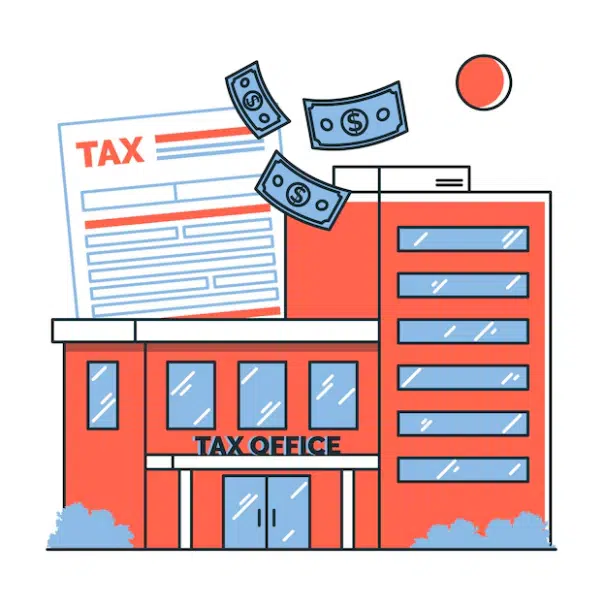The landscape of financial portfolios is constantly evolving, shaped significantly by policy changes in taxation. In the US, tax reforms have a profound impact on long-term investments, influencing the strategies of individual investors and institutions alike. One of the key factors to consider is how these regulatory alterations can affect the potential growth and sustainability of investments aimed at a future payoff..
The interplay between tax reforms and investment strategies highlights the importance of staying informed about regulatory developments. Changes in tax policy can alter the attractiveness of certain investment vehicles, such as retirement accounts, real estate, or dividend-paying stocks, by shifting their associated tax advantages or liabilities. For investors, understanding these shifts is not just about compliance but also about optimizing returns. Navigating this complex landscape requires careful planning and adaptability to ensure that financial goals remain achievable amidst an ever-changing regulatory environment.
The shifting ground of tax policy
Tax reforms in the United States have a history of inducing shifts in investment strategies. The ever-changing landscape of fiscal policy means that investors must stay informed and agile, adapting their approaches to maximize returns while minimizing liabilities. Often, legislative adjustments are aimed at stimulating economic growth, but they can also present challenges or opportunities for those involved in long-term financial ventures. As policymakers introduce new tax measures, the effects on investment vehicles such as stocks, bonds, real estate, and retirement accounts need to be closely monitored.
One significant way in which tax alterations manifest is through adjustments in capital gains taxes. These taxes, applied to the profit from the sale of an asset, directly influence investment strategies, especially those with a long-term horizon. An increase in capital gains tax rates may deter selling assets or encourage holding onto them for longer, affecting market dynamics. Conversely, a reduction could incentivize divestment, leading to a more liquid investment environment.
Navigating the maze of deductions and credits
Another crucial aspect of tax policy shifts is their effect on deductions and credits, which play a pivotal role in incentivizing investments. Individuals and entities planning for the future must often make calculated decisions based on the availability and sustainability of these fiscal incentives. Deductions and credits directly impact the appeal and financial viability of various investment types, such as renewable energy projects or affordable housing developments. Understanding how tax reforms modify these incentives is essential for investors aiming to maximize returns without undue exposure to risk.
For instance, tax credits aiming to promote clean energy can create substantial investment opportunities. Investors leaning towards sustainable projects may benefit from the introduction or expansion of such credits, ultimately increasing the attractiveness of green investments. Similarly, deductions related to educational expenses or retirement savings can make these options more appealing by reducing the taxable income of investors.
Retirement savings and tax reforms
The implications of tax changes on retirement savings can be immense, affecting both the contributions to and withdrawals from these accounts. With tax-advantaged retirement accounts like 401(k)s or IRAs, reforms altering contribution limits or tax treatment of withdrawals have direct repercussions on long-term saving strategies. Understanding these dynamics is crucial for investors aiming to secure a stable and prosperous retirement.
Legislative changes may introduce more favorable conditions for retirement savings, encouraging higher contribution limits or offering new benefits for retirement accounts. These reforms can provide a more robust framework for individuals to build substantial nest eggs over their working lifetimes. Conversely, less favorable changes could constrain contribution capacities or alter tax treatment upon withdrawal, necessitating adjustments in how investors plan for retirement.
The broader economic ramifications
The influence of tax reforms extends beyond personal and institutional investment strategies, affecting the broader economic environment. As policies are designed to stimulate growth or encourage specific behaviors, they can lead to shifts in market trends and economic stability. An understanding of these broader impacts is vital for anyone engaged in long-term financial planning.
When tax policies shift, they can either stimulate or constrain economic activity. For instance, tax cuts designed to increase consumer spending and investment can invigorate markets, providing increased opportunities for investors. However, these changes can also lead to budgetary imbalances if not paired with appropriate fiscal measures elsewhere. The resulting economic environment can affect interest rates, inflation, and overall market confidence, all of which play critical roles in shaping investment returns.
Global considerations for US investors
Tax reforms in the US do not occur in isolation but within a global framework of economic interdependence. Changes in US tax policy can have international repercussions, influencing global market dynamics and investment flows. For long-term investors, understanding these cross-border effects is increasingly important in a globalized economy.
Internationally, tax reforms in the US can affect foreign investment, as international investors consider the relative advantages of US markets. A favorable tax environment may encourage increased foreign capital inflow, while restrictive measures could deter investment. US-based investors with international portfolios must also be aware of global reactions to domestic tax policy changes, as they can significantly alter the investment landscape abroad.




